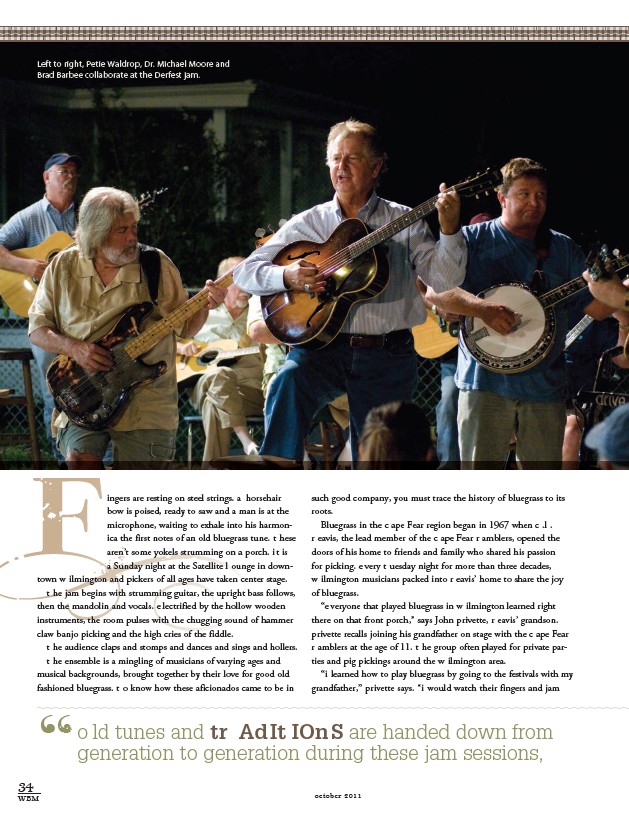
Left to right, Petie Waldrop, Dr. Michael Moore and
Brad Barbee collaborate at the Derfest jam.
Fingers are resting on steel strings. A horsehair
bow is poised, ready to saw and a man is at the
microphone, waiting to exhale into his harmonica
the first notes of an old bluegrass tune. T hese
aren’t some yokels strumming on a porch. It is
a Sunday night at the Satellite L ounge in downtown
W ilmington and pickers of all ages have taken center stage.
T he jam begins with strumming guitar, the upright bass follows,
then the mandolin and vocals. E lectrified by the hollow wooden
instruments, the room pulses with the chugging sound of hammer
claw banjo picking and the high cries of the fiddle.
T he audience claps and stomps and dances and sings and hollers.
T he ensemble is a mingling of musicians of varying ages and
musical backgrounds, brought together by their love for good old
fashioned bluegrass. T o know how these aficionados came to be in
such good company, you must trace the history of bluegrass to its
roots.
Bluegrass in the C ape Fear region began in 1967 when C .L .
R eavis, the lead member of the C ape Fear R amblers, opened the
doors of his home to friends and family who shared his passion
for picking. E very T uesday night for more than three decades,
W ilmington musicians packed into R eavis’ home to share the joy
of bluegrass.
“E veryone that played bluegrass in W ilmington learned right
there on that front porch,” says John Privette, R eavis’ grandson.
Privette recalls joining his grandfather on stage with the C ape Fear
R amblers at the age of 11. T he group often played for private parties
and pig pickings around the W ilmington area.
“I learned how to play bluegrass by going to the festivals with my
grandfather,” Privette says. “I would watch their fingers and jam
O ld tunes and tr ad it io n s are handed down from
generation to generation during these jam sessions,
“ 34
WBM october 2011